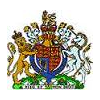 The case of Stempowicz v Dobbs involves a collision at the intersection of Veterans Memorial Parkway and Langford Parkway in Langford. The traffic light was green for the opposing drivers, one turning left and one driving straight through. Justice Morley decides which driver was the immediate hazard.
The case of Stempowicz v Dobbs involves a collision at the intersection of Veterans Memorial Parkway and Langford Parkway in Langford. The traffic light was green for the opposing drivers, one turning left and one driving straight through. Justice Morley decides which driver was the immediate hazard.

View of Collision Location
Circumstances of the Collision
Tienna Stempowicz was travelling northbound on Veterans Memorial Parkway intending to turn left onto Langford Parkway.
Michael Dobbs was driving southbound on Veterans Memorial Parkway, having turned off of Meaford Avenue about 450 meters away. He intended to pass through the intersection continuing southbound.
The two collided somewhere between the two southbound zones.
The Law
174 When a vehicle is in an intersection and its driver intends to turn left, the driver must yield the right of way to traffic approaching from the opposite direction that is in the intersection or so close as to constitute an immediate hazard, but having yielded and given a signal as required by sections 171 and 172, the driver may turn the vehicle to the left, and traffic approaching the intersection from the opposite direction must yield the right of way to the vehicle making the left turn.
[19] An “immediate hazard” was defined by Davey J.A. in Keen v. Stene as arising if the driver of an oncoming car must “take some sudden or violent action to avoid threat of a collision”: (1964), 44 D.L.R. (2d) 350 (B.C.C.A.) at p. 359. If the oncoming vehicle cannot safely come to a stop when its driver sees (or ought to see) the left‑turning car enter the conflict space, then the oncoming vehicle is an immediate hazard and the turn must not be made. If the oncoming vehicle can safely come to a stop upon seeing the initiation of the turn, then the turn is lawful and the driver of the oncoming car must yield the right of way.
Which Driver was the Immediate Hazard?
This case analyzes the rights of way in terms of a vehicle being an immediate hazard. Justice Morley found that Ms. Stempowicz had the right of way when she began her left turn because Mr. Dobbs was far enough away that he could have slowed to a stop before the intersection.
However, Ms. Stempowicz anticipated the collision and stopped unexpectedly, then closed her eyes and took her foot off of the brake. This made her partially at fault for the collision.
Liability for the Collision
The Justice apportioned liability for the crash at 90% for Mr. Dobbs as he assumed that he could continue at speed without anticipating that Ms. Stempowicz might stop. He was also speeding as he approached the intersection.
Learn More
Share This Article
- Log in to post comments
